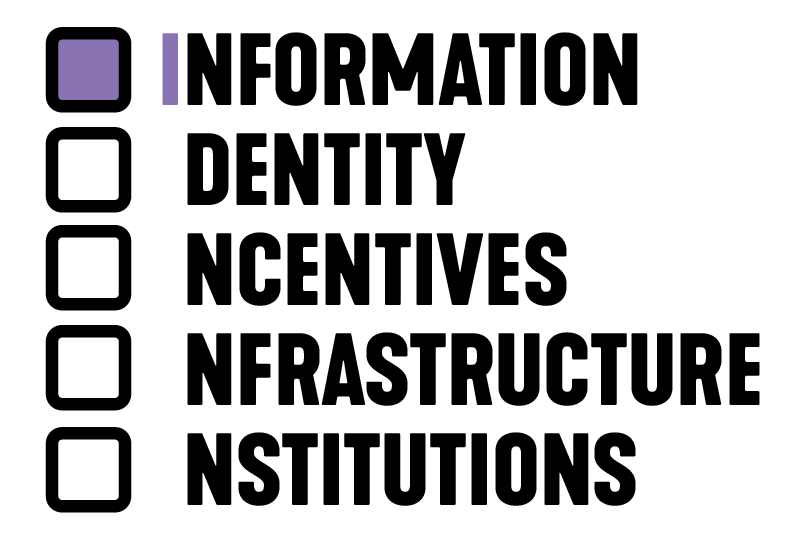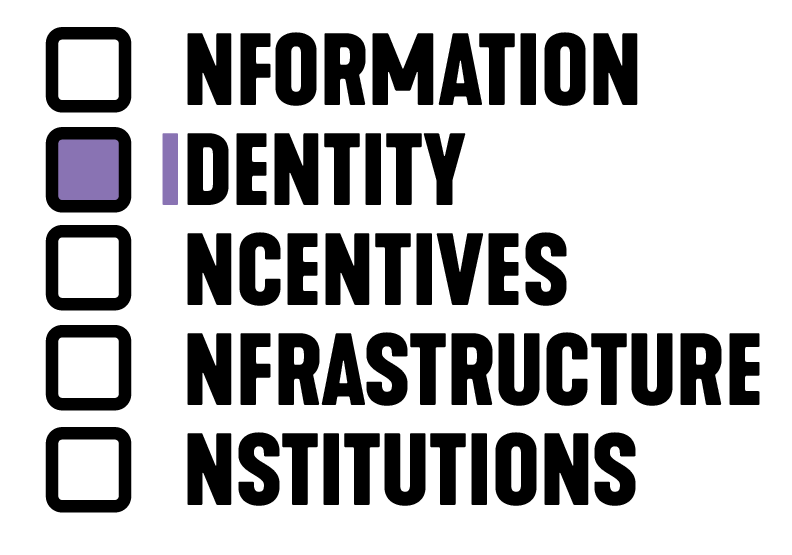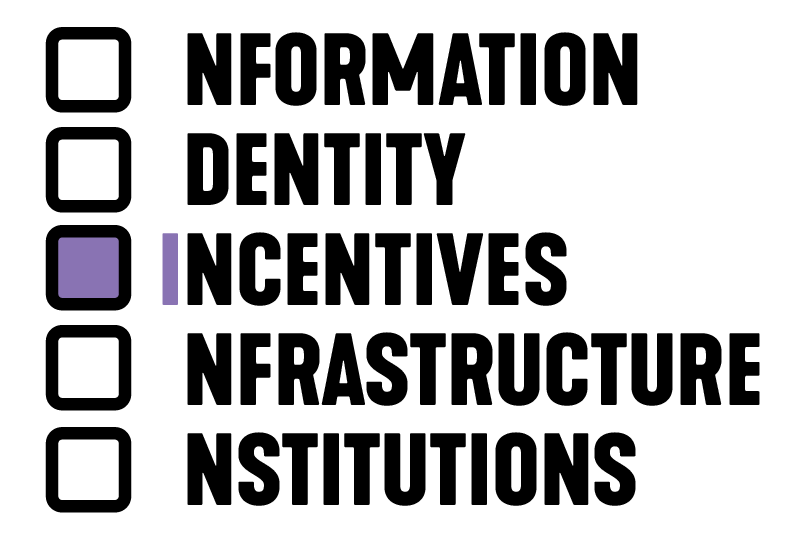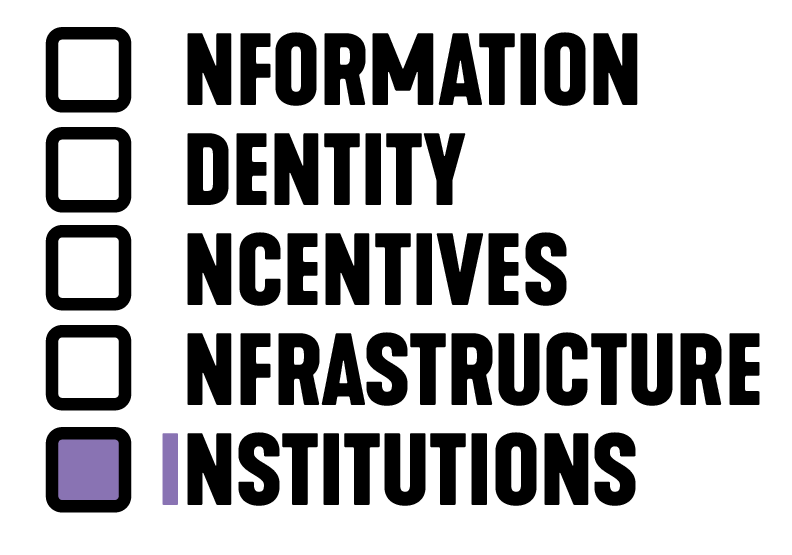If you are interested in learning ideas for how to change the environment to impact teamwork or people, we invite you to read below about the Five I’s model, which can help you understand a little more about how to use it. An article by Guillermo Lechuga, Management 3.0 Facilitator from Mexico.
If at some point in your personal or professional life you have needed to make people change their way of thinking and acting, you have probably failed like me, let me tell you that this is something quite common.
I won’t ask you about how that made you feel or what happened next. I have been in your situation several times and it has been quite frustrating. At one point in my life, a boss recommended that I read the book: “Switch: How to Change Things When Change Is Hard” by Dan y Chip Heath. This book changed my perception of change, starting with the following quote.
People don’t resist change, they resist being changed.
Peter Senge
It is a reality that our behaviors depend on our environment and vice versa.
A simple example could be if we are in a place where a huge bonus is paid only to the person who generates the most sales in a team, it is very likely that no one on that team will share information, or give advice on how to get more sales because everyone will want to win the juicy bonus.
Then, if you ask them to collaborate, they just won’t. Because it’s better if they don’t.
What if we remove that bonus and make it a group bonus? It is very likely that the person who always won the bonus will be upset. But it’s also possible that if the person feels stimulated to fight for a bonus, unlike what they did to achieve it before, now they will have to work as a team to achieve it.
Are we trying to directly change people? No, they are the ones who the power to decide of whether or not they want to adapt to the environment.
So it sounds logical that if we change the environment we can influence people for indirect change.
This is what the phrase cited above refers to, resistance to change is something common in human beings it cannot be eliminated, only reduced or managed.
Several years ago, Jurgen Appelo created a change management model, which he called The Change Management 3.0 Supermodel. This supermodel is made up of 4 models which are:
- Dancing with the system with the PDCA model
- Mind the people with the ADKAR model® (Prosci)
- Stimulate the network with the Adoption curve model
- Change the environment with the Five I’s model
Four I’s plus One
One of the great challenges of self-organization, when it is carried out, is that the teams are focused on themselves, and in many cases, they forget the rest, they are only under-optimizing a part of the system, forgetting that they are part of a system where there are many more parts and which has a greater purpose: the organization.
This model was originally conceived by Mark Van Vugt, who originally only had four elements (information, identity, institutions, and incentives), which he called design principles in interventions to protect the environment. Jurgen Appelo extended it by another dimension, infrastructure and it became the Five I’s model.
As Change Agents, it may be more convenient to experiment and make small adjustments in the environment that can promote the behaviors that we would like to see in people, without necessarily seeking to change them.
Definition of the Five I’s: The single I’s explained
So now we will explore each of the elements of this model. After explaining each of them, I will share some questions that can guide you to start implementing them.
Information
As a starting point, we must encourage people to be aware of the consequences of their current behaviors, for this, we are going to implement information radiators.

Information radiators are tools that allow us to transmit relevant information to people in a simple way, visible to the entire organization. It intends to make the information transparent and keep it available to everyone to make decisions. For example Lean Change Management’s change canvases, Dashboards, kanban boards, OKRs, etc.
In addition to generating information radiators, the challenge here is how do we help people communicate better?
For example, a long time ago organizations began to remove walls and replace them with open spaces or glass walls, open-door offices, with COVID all that changed by implementing collaborative tools such as zoom and teams, among others.
It is important that the information on the radiators allows and encourages valuable conversations between all people involved.
Questions to ask to face the change:
- What information do people need to have visible?
- How should our information radiator be?
- What do we need for the information to flow?
If you like these questions, check out the Management 3.0 Change Management Game. It contains 34 questions matching the four change model mentioned above.
Identity
People are social creatures, and we like to feel part of something bigger. So in change management, it is relevant to generate an identity for change, an identity with which people feel connected.

This identity should make those who are part of it feel proud and that it is so strong that it encourages the same people to pressure each other to achieve those behaviors that we are looking for with the change. To do this, it is important to have an inspiring purpose, a name that invites action, and a symbol that perfectly represents the movement.
Questions to ask to face the change:
- What will be the identity of the group?
- What are our strengths?
- What makes us unique?
- How can we be that example to follow?
- How can we boost peer pressure to boost change?
Tip: Read on about Identity Symbols
Incentives
Undoubtedly, incentives can become dangerous elements in organizations and that can make us fall into the carrot and stick trap.

The trick with incentives is to give them to reward good behaviors rather than just good results as is traditionally done. Also that these rewards should be small, which sometimes is enough to be an acknowledgment or a thank you.
Questions to ask to face the change:
- Is there an incentive that could undermine our initiative for change?
- What are the behaviors we want to amplify?
- How can we encourage good behavior?
Tip: Learn more about Rewards & Incentives with Management 3.0.
Infrastructure
This element was incorporated by Jurgen Appelo in the original model of the Four I’s and refers to the physical or digital, tangible or intangible barriers that we may have in our environment in the face of the changes we want to boost.

For example tools, distance, language, time zones, etc…
It is also important to generate guides that allow people to know that they are going in the right direction.
Questions to ask to face the change:
- What barriers should we remove?
- Should we push a barrier?
- What guides are we needing to point the right way?
Institutions
Although most organizations are likely to be full of rules, sometimes it is necessary to add a few more to help us boost those behaviors necessary for change.

We need to generate guidelines that together with the aforementioned elements allow us to generate changes in the environment that promote changes in people.
Even the same people can generate this governance as communities of practice or informal structures through rules, politics, codes of conduct, processes, etc…
Questions to ask to face the change:
- Do we need any rules?
- Are there rules that we should discard because they no longer favor the behaviors we want to encourage?
- How can we make agreements to continue working together when we disagree?
- How can governance happen between people?
Manage the system, not the people
It is easier to change the environment and let people re-organize themselves than to try to change each one of them individually. For this reason, in Management 3.0 we manage the system and not the people.
I stopped feeling frustration for trying to change people without results and I began to feel excitement to conduct experiments in the environment and see what happened, without pressure. Knowing that things may or may not work, but you can always learn and keep experimenting.
The trick is to influence people through having the correct information with fluid communication, a powerful identity that motivates them to go for more and promote change. It’s important to be rewarded for their behavior more than for their results and to remove the necessary barriers, and co-create the rules needed for a collective purpose.
Without a doubt, change is not something simple and in each environment, it is a different challenge. However, having a non-prescriptive guide can help you. In this article we only saw one of the 4 models of the Change Management 3.0 Supermodel, if you would like to know more you can learn about it in our Change Management module in one of our next official workshops.

